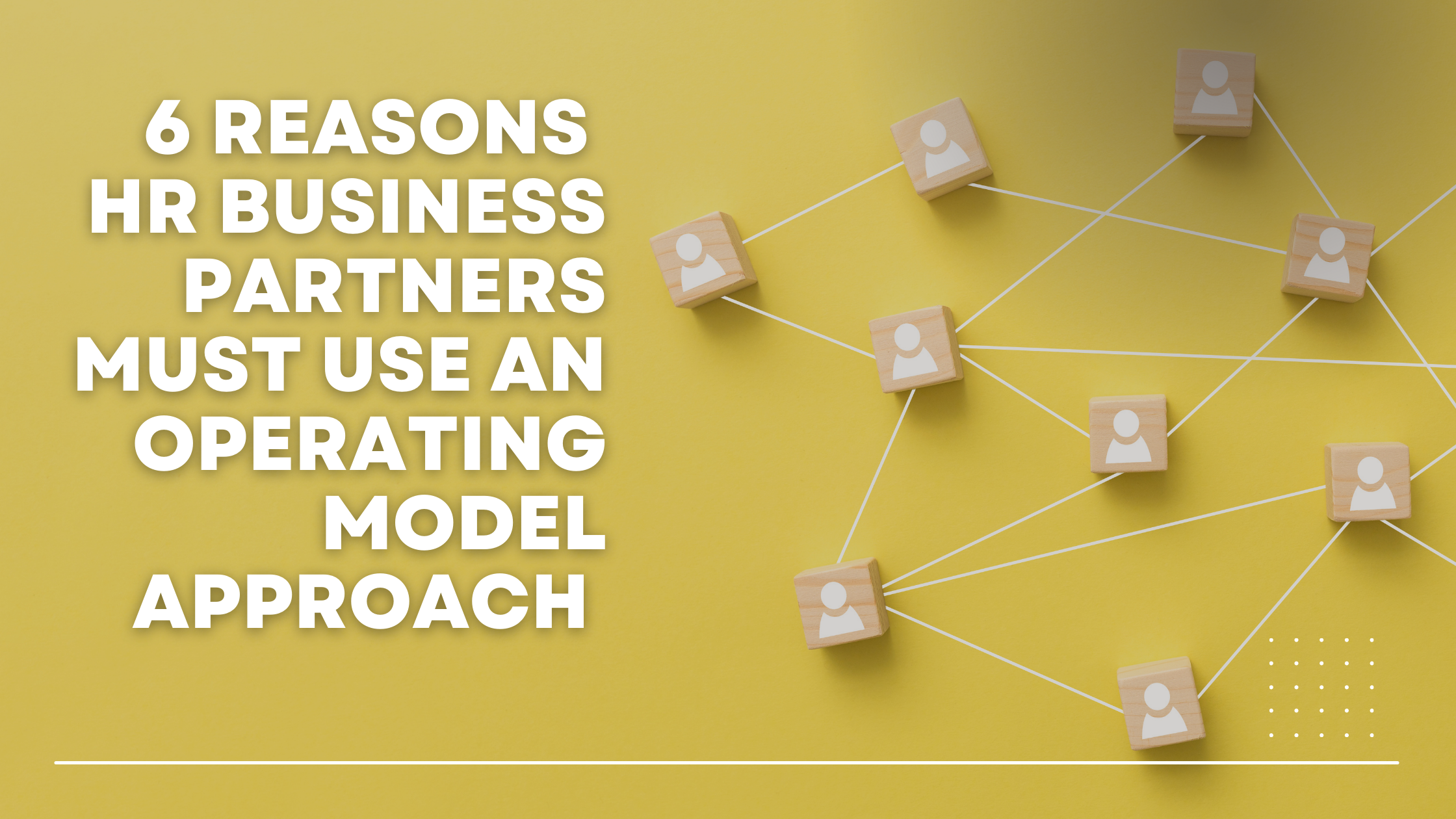
The role of an HR Business Partner is to be the strategic liaison between HR and the business. According to Gartner, organisations that build high-performing HR Business Partners improve employee performance by up to 22% and employee retention by up to 24%.
A critical success factor for a high-performing HR Business Partner is to understand how their client(s) creates and delivers value for their customers. In other words, their Operating Model.
An Operating Model is a visual, holistic representation that shows the combination of elements within an organisation (such as people, processes and systems) required to deliver products and services to customers. Its clarity serves as a blueprint to bridge the gap between the strategic vision and what individuals and teams should be doing in their roles, helping them answer “what does the strategy mean for me?” While strategy engages 10% of the organisation, operating models engage the remaining 90%.
In this post, we’ll describe 6 reasons HR Business Partners must leverage the concept of an Operating Model to help them achieve their objectives.
6 reasons HR Business Partners must use an Operating Model approach.
It provides a deep understanding of the business they serve
An Operating Model is powerful because it allows for a granular and holistic view of how an organisation delivers value to their customers and stakeholders. An Operating Model's visual nature helps simplify complexity and enables HR Business Partners to understand what the business does. A clearly articulated Operating Model answers the questions contained in our BeHOLISTIC™ Framework.
A survey conducted by Korn Ferry found that 41% of Chief Human Resource Officers cite business acumen as the most lacking skill when searching for HR talent. An Operating Model is a tool that gives HR Business Partners the business acumen they need to fully grasp how the business works and speak the language of the people they serve. They can then shape HR policies in a way that helps enable their client(s).
They can lead the business conversation
A recent survey undertaken by Sage showed that 57% of C-Suite Executives viewed HR as a largely administrative function. Using the Operating Model approach will help HR Business Partners show their ability to look at the bigger picture, demonstrate a more strategic approach, and become the change agent and strategic partner expected of them.
A well defined Operating Model increases transparency on current business performance. Without this view, it is challenging for HR Business Partners to lead the business conversation and help their businesses improve what they do. Instead, they have to play a more reactive role where, rather than say, “these are the areas I think you should improve in, and this is why”, they can only ask, “how can I help you today?” Therefore, an Operating Model helps HR Business Partners earn the credibility and trust of the senior leadership they serve.
It helps to evolve people capabilities with strategic direction
An Operating Model helps HR Business Partners connect people capabilities and how the business provides value to customers and stakeholders. They are better placed to identify what skills are needed in the future to help inform recruitment and learning and development and enable career growth for employees. This can also be linked to the objectives of their agency and stakeholders. This should help alleviate some of the challenges raised in the Independent Review of the APS where 42% of respondents cited career development as a primary reason for leaving their agency, and just over 25% of agencies reported having a formal talent management strategy in place. An Operating Model also helps an agency in the war on talent because scarce resources are more attracted to work in an organisation which has a clear purpose and direction.
It strengthens company culture and employee experience
Since an Operating Model acts as a blueprint to help employees connect what they are doing with why they are doing it, research has shown employees are more likely to be engaged and have a better experience. This, in turn, helps to drive the right culture within the business. The clarity provided by an Operating Model positively impacts all the key indicators identified in the People Matter Employee Survey, including purpose and direction, work environment, enabling practices and leadership. According to the Independent Review of the Australian Public Service, employees who feel connected to their company’s mission and find meaning and purpose at work are 2.2x as likely to be satisfied at work.
They can act as a change agent
The granularity of an Operating Model serves as a powerful tool when understanding, managing and communicating the change impacts of transformation programs. Mapping the differences between the Current and Future Operating Model help employees see what is changing visually and engagingly.
An Operating Model can act as the anchor for the transformation program to provide rationale and context behind decisions. Since an Operating Model connects strategy with operations, employees can see exactly what is changing and why, i.e. how it relates to the strategy. This enables an HR Business Partner to more easily facilitate discussions around change and transformation while also proactively participating in developing change management plans.
It informs a suitable delivery model for the HR function
Apart from helping HR Business Partners to improve their services to businesses, an Operating Model can also help determine a suitable delivery model for HR as a whole. HR Business Partners will benefit from their department being able to clarify what outcomes they should be delivering (e.g., consultative services, transactional services), who should be delivering the outcomes (e.g., HR Business Partners, Shared Services) and how outcomes are delivered (e.g., processes).
In summary, there are many benefits for HR Business Partners to use an Operating Model approach. The ones included in this list will help HR Business Partners elevate themselves to play a more strategic, consultative role to their clients.
The value of an HR Business Partner lies in their ability to advise on the future, mission, goals, and overall strategy of the business they serve. This is an impossible task if they do not know their client’s Operating Model.
See our services for how we can help you address your challenges.
If you’re unsure where to start, contact us to point you in the right direction.









